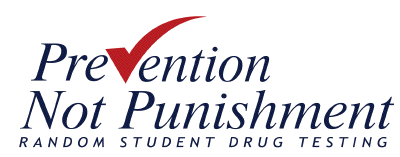|
SMARTER STUDENT DRUG TESTING

Here are some key ideas to improve student drug testing programs that come from Robert L. DuPont, M.D. & Harvey Graves, Ph.D., 2005. Download the full PDF file.
|

Identify Commonly Used Drugs
Knowing what drugs are available and which are widely used in the school community can help determine how effective drug testing will be. By surveying the school population, a school can create its own core panel drug screen.
Do not limit the tests to the common 5-panel screen (amphetamine/methamphetamine, marijuana, cocaine, opiates, phencyclidine), because they may not take into consideration the actual patterns of student drug use. Students who use drugs may avoid the drugs they know to be on the panel, and use alternatives instead. The school's specific core drug test panel should be used with every test, and include random testing for additional substances (such as EtG Alcohol Testing and Nicotine Testing).
Let students know the school tests for a full range of drugs, as it will help deter drug use to a greater extent.
|

Vary the Types of Tests Used
Hair, saliva, and urine tests each have their own distinct advantages and disadvantages; however, not knowing which will be used can significantly reduce cheating on drug tests, a common concern in student drug testing. It is much harder to cheat on hair and saliva tests than urine tests. If a student does not know which test will be done, he or she cannot plan to cheat on a urine test.
|

Use Specimen Validity Testing
Specimen validity testing examines the pH, specific gravity, and createnine level within a urine sample. There is usually no extra cost and it limits a student's ability to cheat. Samples can also be tested for the presence of adulterants.
|

Determine How Many Students Need to Be Tested
Know how many students need to be tested each year in order to achieve deterrent goals. This number, called random pool penetration, is commonly 50% in the workplace and as little as 10% in schools. The higher the percentage of students tested, the more effective the testing will be both as a deterrent to drug use and as a way to identify drug using students who need help to become and stay drug-free.
Consider increasing the frequency of students tested as an additional tool to increase the effectiveness of testing. If testing days are not predictable, then students will be less likely to change behaviors to avoid being detected and be more likely to avoid drug use altogether.
|

Track ALL Results
Track both positive and negative test results: knowing what drugs are used and not used can help determine what to test for as years go on, as the student population changes as well as the level of drug use changes.
|
|
